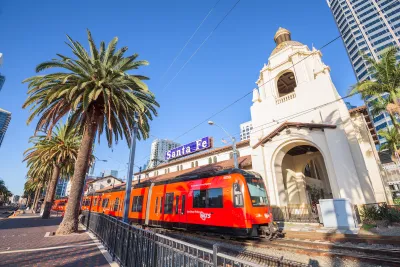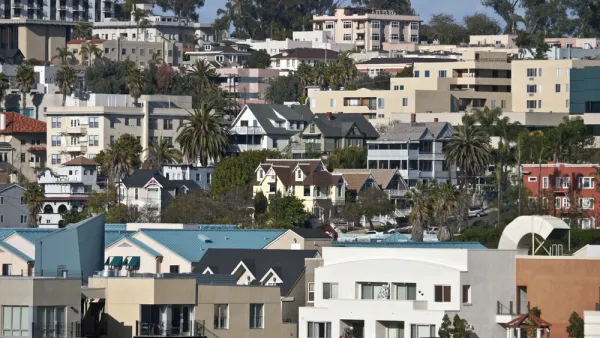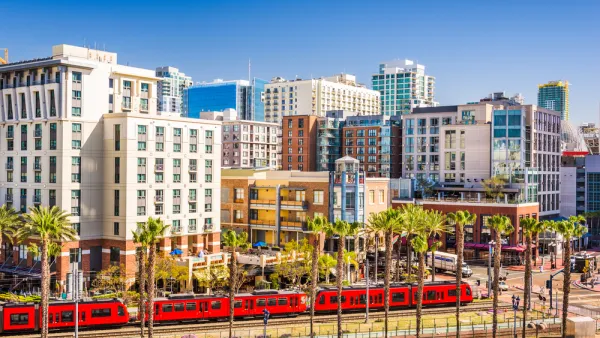The new plan, set to take effect in 2025, accounts for changes in mobility patterns brought on by remote work.

The San Diego Association of Governments (SANDAG) is developing a new long-term transportation plan that will account for the rise in remote work and changes in local commuting and travel patterns, reports Andrew Keatts in Axios.
“Antoinette Meier, SANDAG's senior director of regional planning, said SANDAG's planning decisions always assumed remote work decreased driving, so accounted for greenhouse gas emissions reductions mandated by state law.” However, people are making other vehicle trips that would have previously been wrapped into commutes, leading to a smaller reduction in vehicle miles driven and emissions than previously estimated.
Meanwhile, “San Diego Councilmember Vivian Moreno said the fact that higher-income people living in the northern part of the county are more likely to be allowed to work remotely needs to be factored into the agency's transportation decisions.” As the article notes, “56% of households with annual incomes above $150,000 remote work, more than twice the rate of households with incomes below $49,000.” Moreno called on SANDAG to plan for expanded transit and transportation projects in the southern part of the county, where residents are more likely to continue having to commute to physical workplaces.
FULL STORY: Remote work helps draw blueprint for region's transportation system

National Parks Layoffs Will Cause Communities to Lose Billions
Thousands of essential park workers were laid off this week, just before the busy spring break season.

Retro-silient?: America’s First “Eco-burb,” The Woodlands Turns 50
A master-planned community north of Houston offers lessons on green infrastructure and resilient design, but falls short of its founder’s lofty affordability and walkability goals.

Delivering for America Plan Will Downgrade Mail Service in at Least 49.5 Percent of Zip Codes
Republican and Democrat lawmakers criticize the plan for its disproportionate negative impact on rural communities.

Test News Post 1
This is a summary

Test News Headline 46
Test for the image on the front page.

Balancing Bombs and Butterflies: How the National Guard Protects a Rare Species
The National Guard at Fort Indiantown Gap uses GIS technology and land management strategies to balance military training with conservation efforts, ensuring the survival of the rare eastern regal fritillary butterfly.
Urban Design for Planners 1: Software Tools
This six-course series explores essential urban design concepts using open source software and equips planners with the tools they need to participate fully in the urban design process.
Planning for Universal Design
Learn the tools for implementing Universal Design in planning regulations.
EMC Planning Group, Inc.
Planetizen
Planetizen
Mpact (formerly Rail~Volution)
Great Falls Development Authority, Inc.
HUDs Office of Policy Development and Research
NYU Wagner Graduate School of Public Service





























